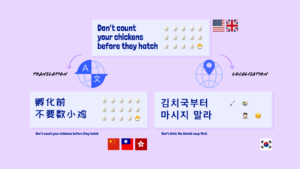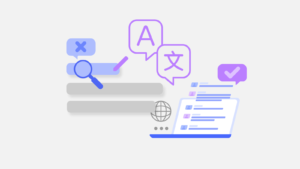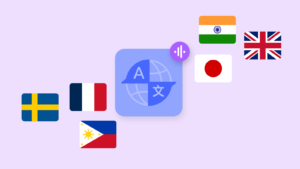Google Translate is one of the most widely used translation tools in the world. Whether you’re traveling, working, or just trying to understand a foreign text, it’s often the go-to solution for quick translations. But how accurate is Google Translate? And is it the most reliable translation service available?
To answer these questions, we need to take a closer look at how Google Translate works, its strengths, and its limitations.
How Does Google Translate Work?
Google Translate has evolved significantly over the years. Initially, it relied on statistical machine translation (SMT), which analyzed vast amounts of translated texts to predict the most likely translations. However, in recent years, Google has adopted neural machine translation (NMT), which uses deep learning models to improve accuracy by understanding context rather than just individual words.
The system functions by translating entire sentences instead of word-for-word substitutions. This approach allows for more natural-sounding results, especially for European languages, which share structural similarities. However, for more complex language pairs, particularly those with significant grammatical differences, accuracy varies.
Measuring the Accuracy of Google Translate
Several studies have been conducted to measure the accuracy of Google Translate, including research from the UCLA Medical Center. The results show that while the tool performs well with commonly spoken languages, it struggles with complex sentence structures and less commonly translated texts.
A study by Slator found that Google Translate’s accuracy depends heavily on the specific language pairs. For example, translations between English and Spanish tend to be more precise than translations involving Asian or African languages, where grammatical structures and cultural nuances differ significantly.
Moreover, research from Smartling indicates that Google Translate is best suited for basic communication rather than professional or legal translations. While it can give you a general idea of a text’s meaning, it often falls short when it comes to accurate translations for specialized fields like medicine, law, or marketing.
Measuring the Accuracy of Google Translate
Despite improvements, Google Translate is not free from errors. Some of the most common translation errors include:
- Literal Translations: The tool sometimes translates phrases word-for-word, leading to unnatural or incorrect meanings.
- Grammar Mistakes: Sentence structures may be incorrect, especially in non-European languages.
- Context Issues: Google Translate struggles with ambiguous words or cultural nuances that require deeper understanding.
- Gender Bias: The AI model may assume gender roles based on previous data, leading to biased translations.
- Idiomatic Expressions: Phrases that are unique to a specific culture often lose their meaning when translated automatically.
What Is the Most Reliable Translation Service?
If accurate translations are essential, relying solely on machine translation (MT) may not be the best approach. For business, legal, or medical documents, human translations remain the gold standard. Professional translators understand nuances, cultural references, and context that automatic translations cannot fully capture.
That being said, there are several high-quality translation services that offer a balance between AI and human expertise:
- औरिस एआई – This AI-powered translation tool provides high-quality subtitle translations, combining neural machine translation (NMT) with expert human oversight to ensure accurate translation results. Particularly for specific language pairs like Asian language, e.g. English-Chinese.
- DeepL – Known for its deep learning approach, DeepL often produces more natural-sounding translations than Google Translate, especially for European languages.
- Smartling – A professional translation platform that integrates AI but prioritizes human editing to ensure accuracy.
When Should You Use Google Translate?
While Google Translate work is impressive, it’s best used for:
- Casual Conversations: Great for everyday language needs like chatting with a friend in another language.
- Travel & Directions: Useful for translating signs, menus, and basic questions while traveling.
- Basic Content Understanding: If you need to get the gist of a foreign article or email, Google Translate is helpful.
However, if you need precise, professional translations—especially for target languages that require a high degree of accuracy—it’s best to use human-reviewed services.
When Should You Use Auris AI?
Auris AI is the ideal solution when you need:
- Professional and Accurate Translations: Ensure your videos have high-quality captions in multiple languages.
- Business and Marketing Translations: Avoid mistranslations that could harm your brand’s image.
- Content Localization: Adapt your content for different audiences while maintaining cultural nuances.
- Dual Language Subtitles: Enhance viewer engagement with bilingual captions.
- Seamless Workflow: Speed up the translation and subtitling process with AI-powered automation and human expertise.
Final Thoughts: Is Google Translate Reliable?
The reliability of Google Translate depends on your needs. If you need quick and basic translations, it’s a great tool. But for professional or highly accurate translations, a combination of AI and human expertise is the better option.
For those looking for a seamless way to translate videos into multiple Asian languages तथा add subtitles to videos instantly, औरिस एआई offers the perfect balance of automation and professional oversight.
Translate videos into multiple Asian languages and add subtitles with Auris AI!
- एआई . द्वारा संचालित
- भाषा पेशेवरों द्वारा सहायता प्रदान की
- वैश्विक ग्राहकों द्वारा विश्वसनीय
Visit औरिस एआई today and enhance your multilingual content effortlessly!






